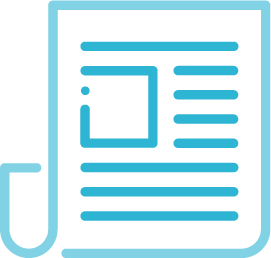Posted by Zosi Team

Diversity is all around us. Whether we’re on the processing floor or resigned to watching television in our living rooms, inclusivity has risen to the forefront of the world stage.
As such, companies have come to depend on diverse voices and capabilities as they seek success and competitive advantage. But simply having culturally diverse members in your organization isn’t enough. High performance and a healthy work environment are direct results of inclusive leadership. That is leadership that fosters a culture wherein everyone is treated with respect and fairness, feels a sense of belonging and value, and thus remain motivated and inspired.
A study on inclusive leadership in the U.S., Canada, Australia, New Zealand, Singapore, and Hong Kong tells us that teams with such leaders are 17% more likely to be high performing and 20% more likely to report they make high-quality decisions. In addition, inclusive leadership has been proven to decrease absenteeism and thus its associated costs.
Inclusive leaders exhibit six key traits that directly foster diversity in their organization. Rest assured, these characteristics go beyond what you might consider keys to effective leadership. This blog break downs each of these six behaviors and details how you can apply them, improving your approach to inclusive leadership today.
Six Characteristics of Inclusive Leadership
Commitment
Be vocal about your dedication to diversity. Fostering an inclusive and diverse work environment takes time and effort. Inclusive leaders find motivation here via a deep-rooted sense of commitment to their role and team. They know that cultivating space begins with and continually depends on their own buy-in. When you show a willingness to invest in people and inspire others, this demonstrates an unwavering commitment to your team.
Humility
Don’t be afraid to acknowledge your personal limitations. Ask for help in overcoming them. Create space in your organization for team members to contribute to this end for the greater good of the organization.
Self-Awareness
We all have room to grow. The ability to recognize this in yourself, particularly your blind spots as they relate to inclusivity and diversity, is paramount to your success as an inclusive leader.
Willingness to Learn
Get to know the individuals on your team. Ask questions. Practice active listening without judgment, as this stifles communication and later ideas. Open-mindedness, attentiveness, and curiosity makes people feel valued and represented.
Cultural intelligence
We’re not talking about the intelligence you can find in a book here. Inclusive leadership demands you develop the ability to adapt in response to various cultural norms, both verbally and non-verbally. In addition, you should understand how your own cultural stereotypes may impact your actions, expectations, and influence on the people around you.
Expert collaborators
Effective collaboration cannot exist without a place where team members feel safe sharing their ideas and views. Leading inclusively means creating these spaces and empowering people to share freely. You want to foster a group identity with shared goals. Doing so ensures team members recognize and value their team’s unique knowledge and strengths.
Conclusion
As you begin to either incorporate these traits into your approach or improve upon them, remember to check your impact. How are you being perceived by those you lead? Can you see evidence of collaboration and openness within your team? Ask for candid feedback and adjust where necessary.
Subscribe to Insider Insights
 Never Miss an Update. Sign Up for Zosi’s e-Newsletter.
Never Miss an Update. Sign Up for Zosi’s e-Newsletter.



 Leadership: Valuing Differences
Leadership: Valuing Differences
 Leadership: Motivating Yourself and Others
Leadership: Motivating Yourself and Others
